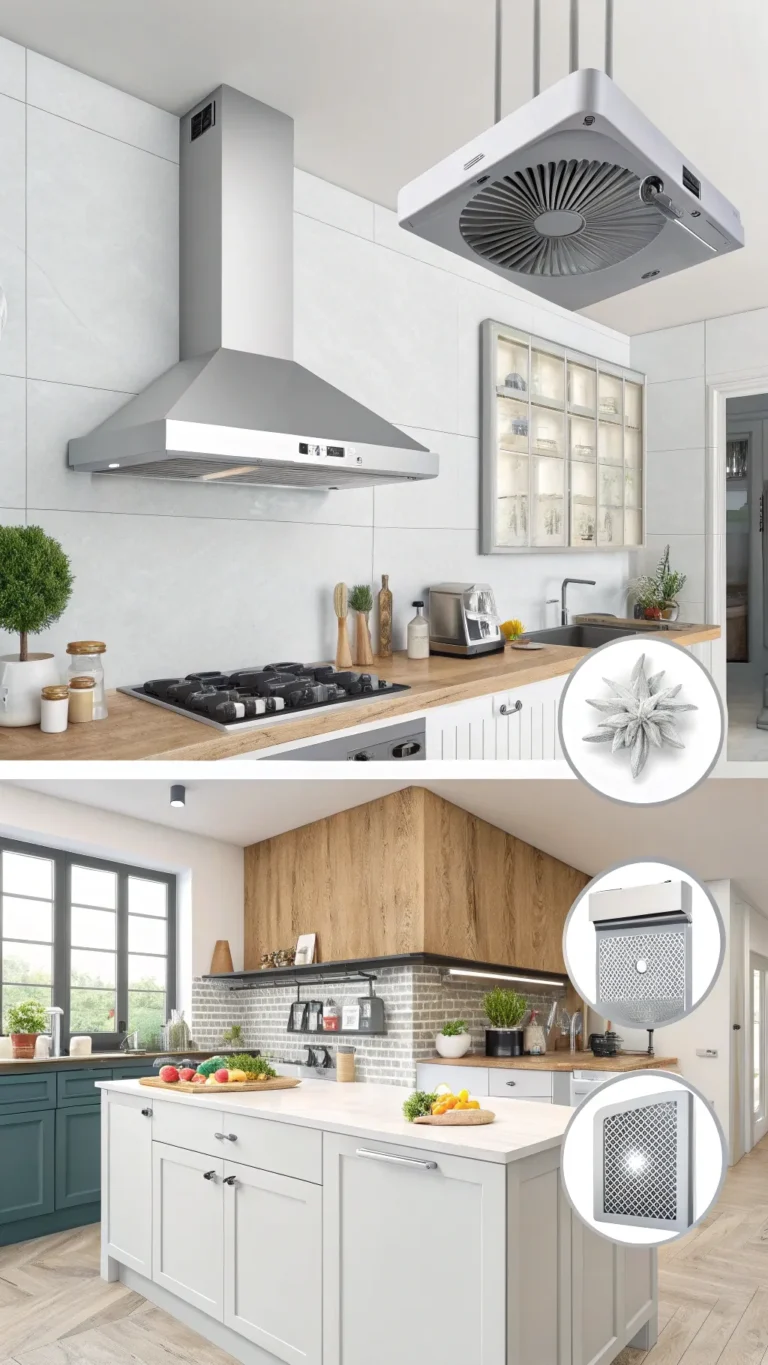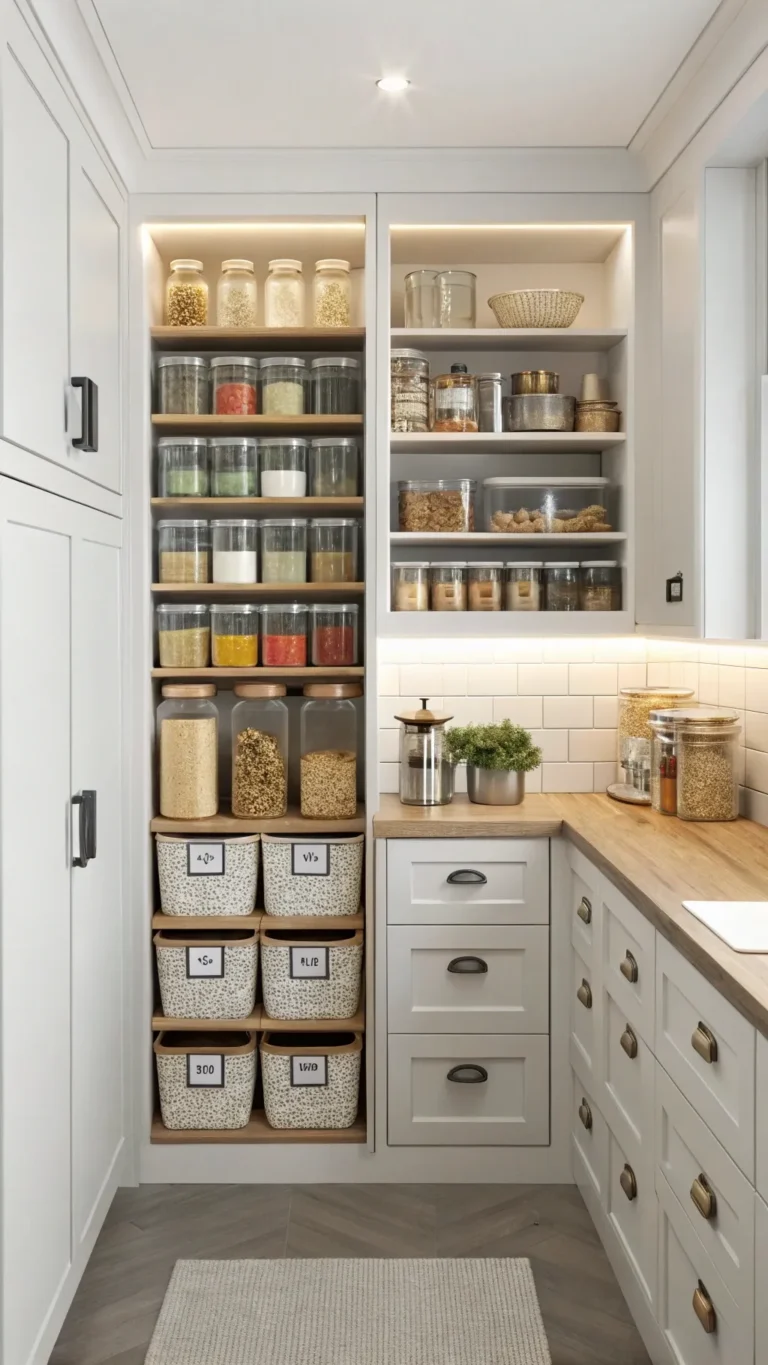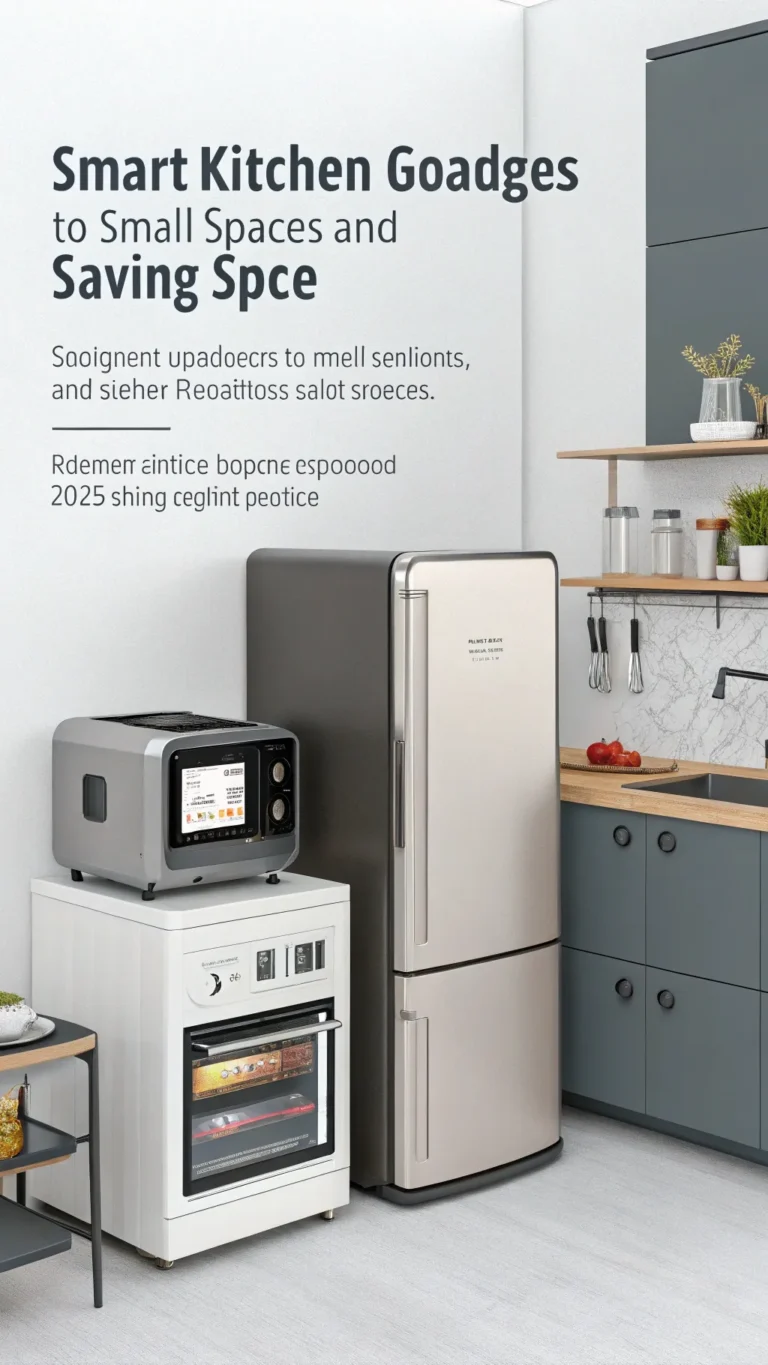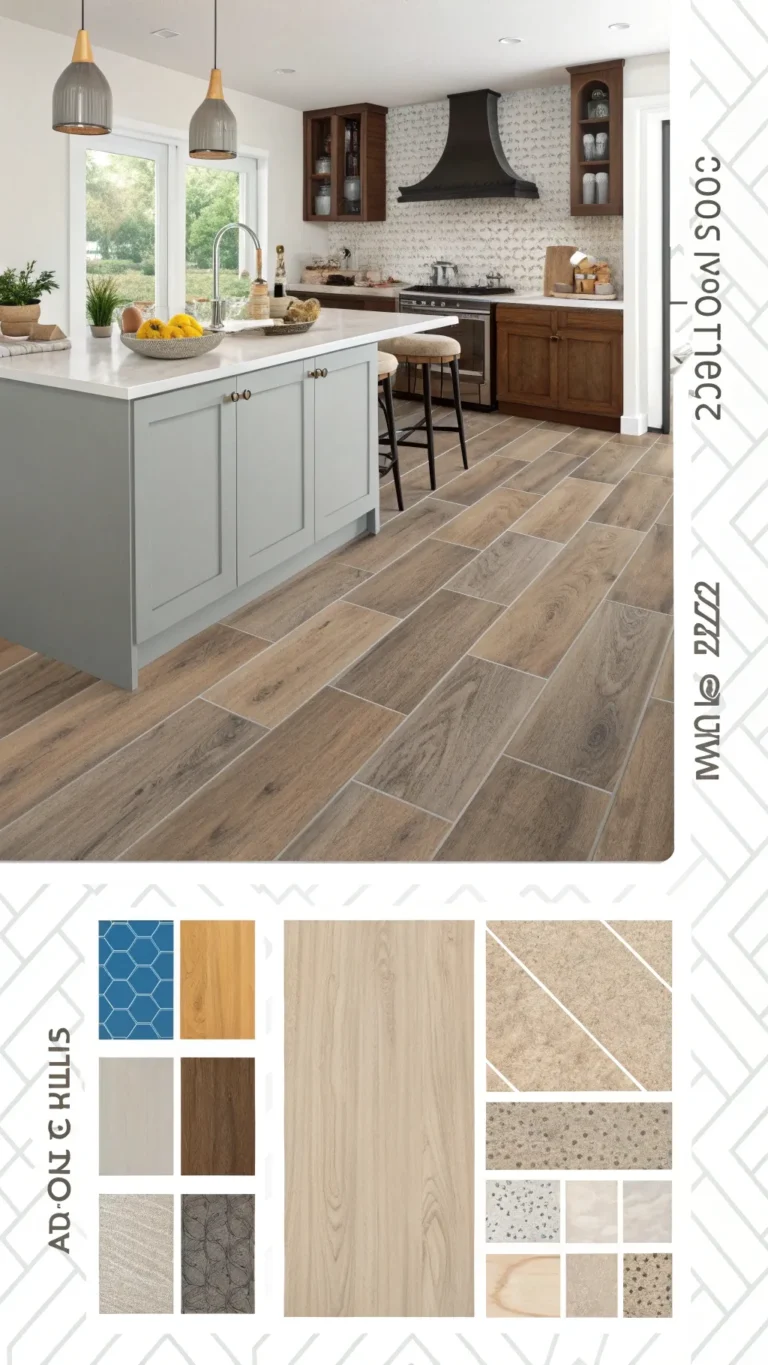Everyone knows how tough it is to keep a small kitchen neat. Cleaning supplies often end up stuffed in crowded cabinets or messy corners. The clutter can make it hard to find what you need. Worse, it can even cause safety problems, especially around kids and pets. Limited space and awkward spots, like under the sink, make this challenge real.
This guide steps in to help transform your small kitchen cleaning storage. It offers easy, smart ways to save space, boost safety, and keep everything within reach. You will find practical tips on decluttering, using common storage spots, picking the right organizers, and even budget-friendly DIY ideas.
From under-sink solutions to vertical storage and child-safe locks, this article covers all you need. Let’s dive into making your small kitchen cleaning storage neat, safe, and stress-free.
Start by Knowing What You Need: Decluttering for Small Kitchen Cleaning Storage
Clutter steals space and peace of mind. The first step to good storage is decluttering your cleaning supplies. Understand what you truly need and what can go.
Start by gathering all your cleaning products and tools in one spot. Seeing everything helps. Check expiration dates too. Yes, cleaning products do expire or lose their power over time. Toss any empty or nearly empty bottles responsibly. Avoid keeping products that you rarely use or duplicates cluttering your space.
Group items by type. For example, sprays, cloths, brushes, powders, and gloves. Categorizing this way makes organizing simpler.
Have you tried multipurpose cleaners? These reduce the number of products you must store. For example, a single all-surface cleaner might replace specialized cleaners for counters and floors.
Keep a “maybe” box for items you’re unsure about. Revisit it after a month. This reduces hoarding and keeps your storage lean.
Expert tip: Marie Kondo famously said, “Keep only what sparks joy.” This applies to cleaning supplies too!
A study from the National Association of Professional Organizers shows that clutter affects mental health. Decluttering first helps you feel calm and in control.
Decluttering Step-by-Step
- Gather all cleaning supplies in one place.
- Check each item’s expiration date.
- Dispose of empty or expired products safely.
- Identify and remove duplicates.
- Sort remaining items by category.
- Put uncertain items into a “maybe” box.
- Plan to reassess the “maybe” box after 30 days.
Photos showing cluttered cabinets versus a neatly sorted collection make this step clear and motivating.
Finding the Perfect Spot: Utilizing Common Areas for Small Kitchen Cleaning Storage
Knowing where to store cleaning supplies in a small kitchen helps you use space smartly.
Under the Sink (The Classic Challenge)
This area is common but tricky. Pipes, garbage disposal, or potential leaks cut into usable space. Plus, the deep shelves make reaching items tough.
Best solutions include tiered or expandable shelves. These layers maximize vertical space. Pull-out drawers or baskets provide easy access, so you don’t have to reach in blind.
Over-the-door organizers work great here. Hang your sprays, gloves, or brushes on the cabinet door. This uses vertical space well and keeps items visible.
Small bins help section off spaces around pipes. One bin for sprays, another for cloths, etc. A waterproof mat on the cabinet floor protects against leaks.
Tip: Measure carefully around pipes before buying organizers. Measure both width and depth; no one likes returning a product that doesn’t fit.
Upper Cabinets (Safety First)
Storing cleaning supplies high up keeps them away from little hands and curious pets. Use sturdy bins with handles to carry items easily. Store only light items here to prevent accidents or broken bottles.
Pantry or Utility Closet (If Available)
When you have a pantry, dedicate a shelf or a vertical zone to cleaning products. Narrow rolling carts can fit between pantry shelves or tight spaces. This allows flexible storage and easy access.
Behind Doors (Often Overlooked)
Behind the kitchen or pantry door is prime real estate. Hang racks or hooks there. Use over-the-door racks for sprays and gloves. Keep in mind weight limits; heavy items may cause damage.
Other Spots
Utility carts on wheels work well if you have floor space. High shelves suit rarely used products. Decorative baskets can hold cloths, sponges, or gloves in plain sight without looking messy.
An interior designer, Sarah Mitchell, says, “Using often neglected spaces like door backs can double your storage capacity.”
Images showing neatly organized under-the-sink areas, door organizers, and rolling carts inspire useful layouts.
Choosing the Right Tools: Clever Products for Small Kitchen Cleaning Storage
Picking the right organizers helps you fit all supplies in a small space neatly.
Types of Organizers to Consider
- Pull-out Systems: Slide-out drawers or shelves bring hard-to-reach items forward.
- Stackable Bins & Containers: Use vertical height. Choose clear bins to see contents quickly.
- Lazy Susans: Great for corners; spin to find your items.
- Door-mounted Racks & Hooks: Save cabinet floor space with these vertical storage helpers.
- Portable Cleaning Caddies: Carry everything from kitchen to bathroom easily — perfect for small kitchens.
- Magnetic Strips: Attach metal spray bottles or cans for wall storage.
- Tension Rods: Create hanging bars inside cabinets or space dividers.
What to Look For
Choose organizers made from durable plastic or metal. Easy-to-clean materials reduce germs and spills. Adjustable shelves adapt to your unique space. Non-slip bases prevent slipping.
Sustainability trends in 2025 favor modular organizers that grow with your needs. Recycled materials and minimalist designs are also popular.
Measure height and width of your largest bottles and tools before shopping. This ensures organizers hold everything without wasting space.
A recent 2025 market study by HomeGoods found pull-out under-sink organizers were the top-selling item in cleaning storage solutions.
Must-Have Organizers (At a Glance)
| Organizer Type | Best For | Pros | Cons |
|---|---|---|---|
| Pull-out Shelves | Deep cabinets | Easy access | Requires installation |
| Stackable Bins | Narrow spaces | Maximize height | Can be tricky to stack |
| Lazy Suzan | Corner spaces | Smooth rotation | Limited size options |
| Door Racks & Hooks | Small cabinet doors | Uses unused space | Weight limits |
| Portable Caddies | Cleaning on the go | Easy to carry | Limited capacity |
Visuals of these products in action provide clear examples.
Get Creative: DIY Cleaning Supply Storage Ideas on a Budget
DIY ideas fit renters or budget-conscious folks perfectly. Many household items can become usable cleaning supply storage.
Repurposing Household Items
- Shoe boxes or sturdy cardboard boxes can be decorated with wrapping paper.
- Plastic food containers, like yogurt tubs, serve as dividers inside bins.
- Magazine holders hold spray bottles standing upright.
- Cereal boxes cut to size work as small shelf dividers.
Easy DIY Projects
- Add hooks or cup holders on the inside of cabinet doors for cloths or small tools.
- Use tension rods horizontally to create extra shelves or hang bottles.
- Create a simple cleaning caddy from a wooden crate or a sturdy box.
- Label all containers with tape and markers or printed labels for neatness.
DIY helps personalize your solution while saving money. Look around your home before buying new items. You might find perfect storage just waiting.
According to a 2024 survey by DIY Network, 63% of people started repurposing containers for better storage during home projects—saving money and space.
Photos showing repurposed items and simple DIY steps inspire action.
Beyond Organization: Safe Storage Cleaning Products and Easy Access
Safety cannot be ignored, especially around children and pets.
Safety Tips
Always store chemicals in their original containers. Labels provide necessary warnings and instructions. Avoid transferring chemicals to other containers which can cause confusion or poisoning.
Keep cleaning products away from food, utensils, and food prep surfaces. Ensure cabinets or closets where you store them have good ventilation, especially under sinks.
Child and Pet Safety
Store hazardous products on high shelves out of reach. Use child-proof cabinet locks for accessible lower cabinets. Many experts, including child safety advocate Dr. Helen Adams, recommend these locks as simple yet effective.
Never store chemicals in food or drink containers. This is a serious hazard.
Accessibility
Place frequently used items in easy-to-reach spots. Busy family members should not struggle to find items quickly. At the same time, make sure storage doesn’t block pipes, valves, or electrical outlets.
Maintenance Tips
Wipe shelves and organizers regularly to remove dust or residue. Check for leaks or spills immediately to prevent damage or accidents. Plan a monthly quick clean and a deep reorganization every three to six months.
Child safety locks and well-ventilated spaces make your small kitchen cleaning storage friendly and secure.
Images showing child locks on cabinets and good ventilation complements this advice.
The EPA provides excellent guidelines on household chemical safety here.
Your Small Kitchen Cleaning Storage Questions Answered
Q: How do I store cleaning supplies safely with kids or pets?
Store products high up or use child-proof cabinet locks. Keep all chemicals in original containers.
Q: What’s the best way to organize under the kitchen sink?
Use tiered shelves, pull-out drawers, and door organizers. Section items into bins around pipes.
Q: How can I store cleaning supplies if I have almost no cabinet space?
Consider a narrow rolling cart or over-the-door racks. Use high wall shelves or decorative baskets for cloths.
Q: Are clear bins better than opaque ones for cleaning supplies?
Clear bins help you find items fast. Opaque bins keep visuals neat. Choose based on your preference.
Q: How often should I re-organize my cleaning supplies?
Aim for a quick tidy monthly and full declutter quarterly or biannually.
Transforming Your Small Kitchen Cleaning Storage
The steps to organized, safe cleaning supply storage start with sorting and decluttering. Next, use your kitchen’s under-sink, door, and pantry spaces smartly. Add the right organizers or DIY creations. Never forget safety and ease of access.
Small kitchens need smart strategies. Organized storage means less time hunting and more room to breathe.
Investing in neat, safe storage for cleaning supplies makes your kitchen function better every day. Materials made with sustainability in mind help too.
Start your small kitchen cleaning storage project today. Share your tips or ask questions below. Explore linked articles for more product ideas.
Remember, a tidy kitchen starts with a tidy mind.
Alt Text Suggestions:
- Organized under kitchen sink storage with pull-out shelves
- Vertical door organizer for cleaning supplies in a small kitchen
- DIY cleaning supply caddy made from reclaimed wood
- Child-proof cabinet lock for safe cleaning product storage
- Stackable bins for cleaning supply organization in a small kitchen






